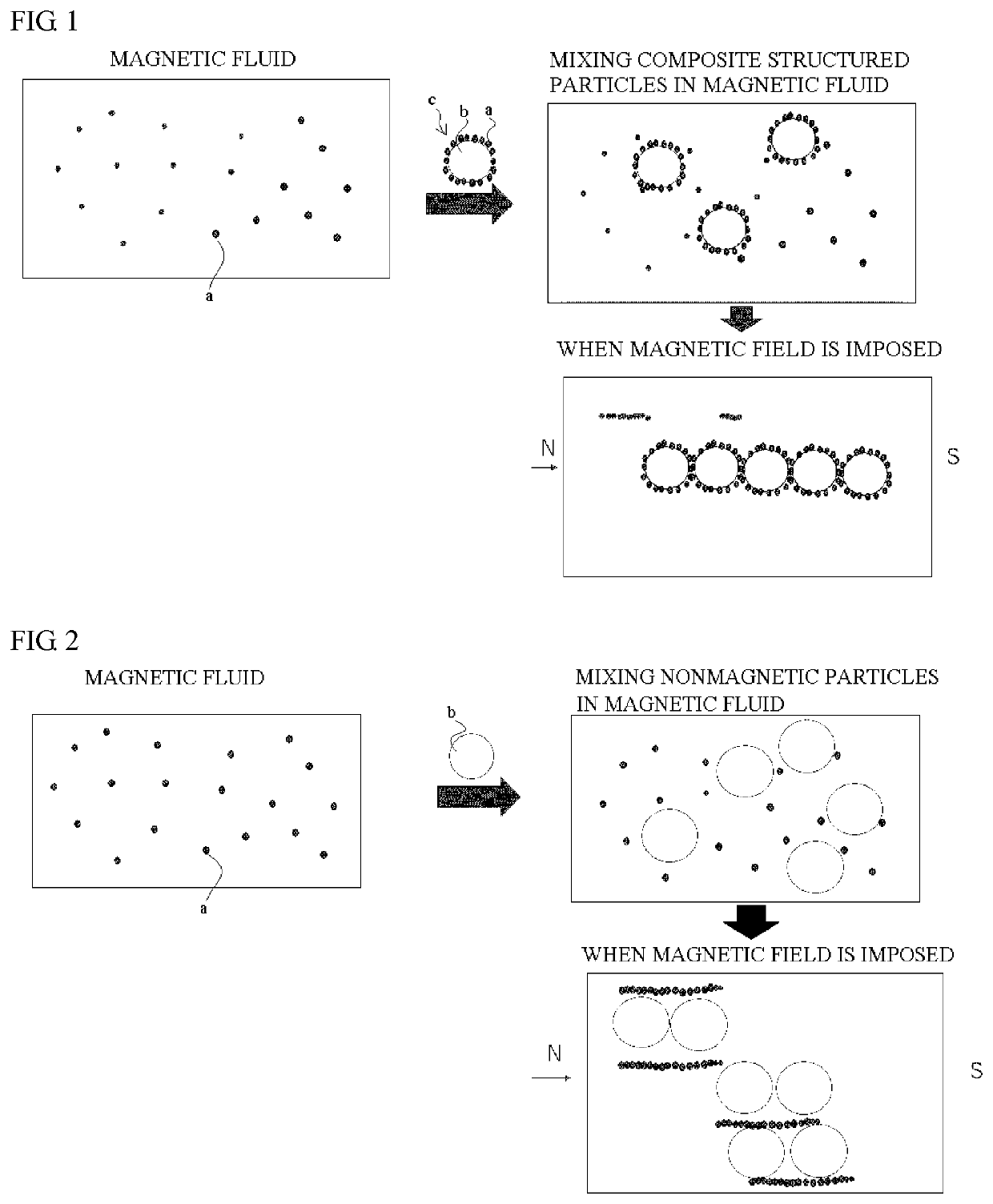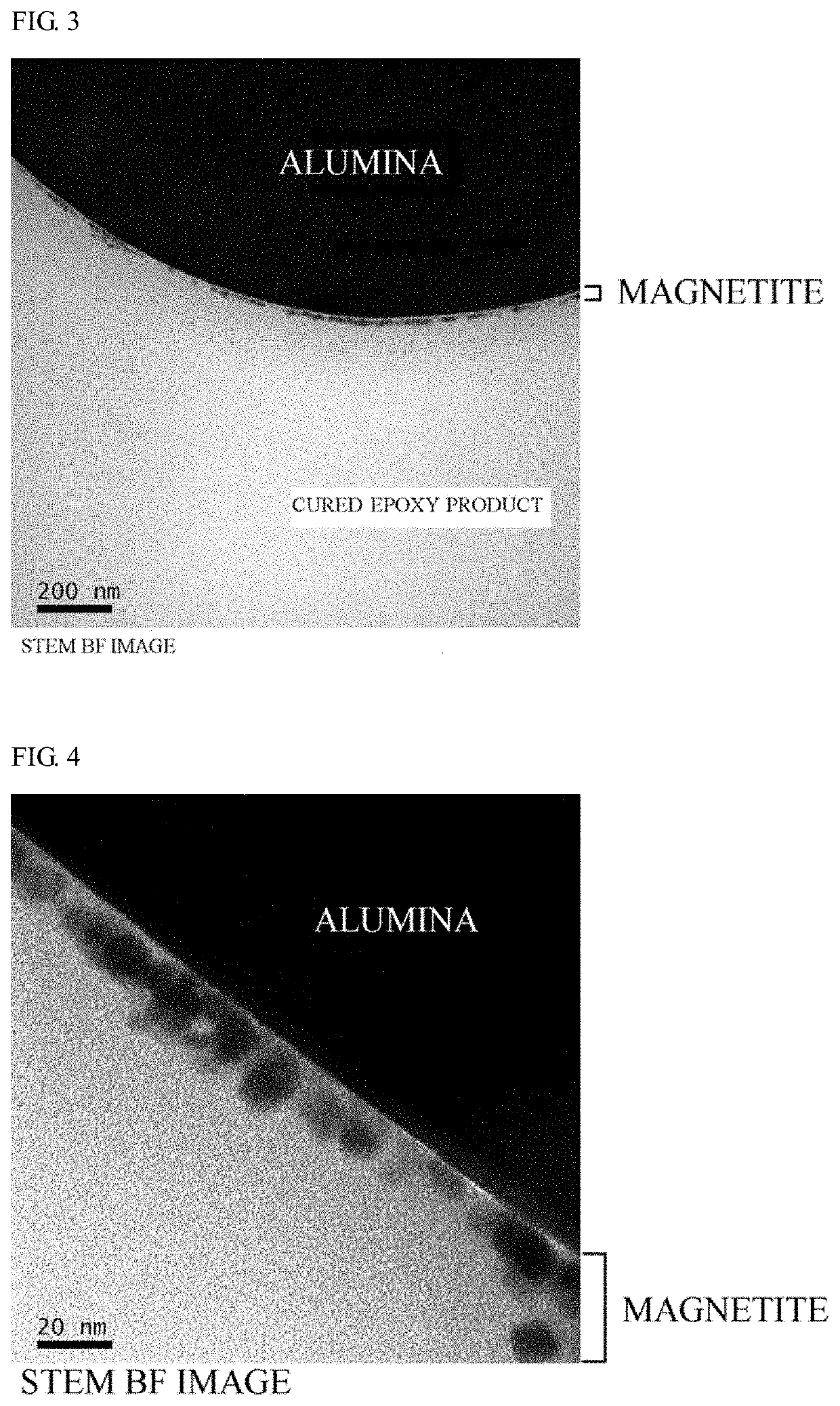Magnetic responsiveness composite material and composition including the composite material
a composite material and responsiveness technology, applied in the field of magnetic responsiveness composite materials, can solve the problems of limited effect and insufficient effect of increasing viscosity of composition, and achieve the effects of increasing viscosity, increasing viscosity, and expressing more viscosity in composition
- Summary
- Abstract
- Description
- Claims
- Application Information
AI Technical Summary
Benefits of technology
Problems solved by technology
Method used
Image
Examples
examples
[0103]Below, the present invention will be explained specifically based on examples (including examples and comparative examples), however, the present invention is not limited to these examples. Note that “part” indicates “part by mass” and “%” indicates “wt %” in the description below.
[0104]1. Producing Particle Samples
[0105]The material below was prepared as first particles.
alumina (spherical nonmagnetic inorganic particles having an average particle diameter D1 of 3 μm)
[0106]The material below was prepared as second particles.
magnetite (spherical magnetic particles having an average particle diameter D2 of 25 nm)
[0107]As the second particles, a magnetic powder obtained by removing a dispersing medium from a market-available magnetic fluid through the process below was used.
[0108](Producing Second Particles)
[0109]First, a magnetic fluid (magnetic particle content was 60%, magnetic particles covered with a dispersant (average primary particle diameter was 25 nm, magnetic particles...
experimental examples 1-4
[0114]The first particles and second particles at mass ratios shown in Table 1 were dry blended by using a mixer under the condition of a temperature being 20° C. and humidity 50%, so that particle samples (magnetic responsiveness composite materials) were obtained.
TABLE 1Experimental Examples1234FirstAlumina90807060ParticlesD1 (μm) 3SecondMagnetite10203040ParticlesD2 (nm)25
[0115]2. Producing Resin-Based Composition
experimental examples 5-8 and reference example 1
[0116]A resin and the respective particle samples obtained in experimental examples 1 to 4 (or samples composed only of the first particles and the second particles are not attached thereto) were mixed at mass ratios shown in Table 2 and resin-based compositions were obtained. The obtained resin-based compositions were evaluated on magnetic characteristic. The results are shown in Table 2.
[0117]As the resin, a mixture of a liquid bisphenol A-type epoxy resin and liquid bisphenol F-type epoxy resin at a mass ratio of 1:1 (an epoxy equivalent of 160 to 170 g / eq, viscosity of 2200 mPa·S, at 25° C.) was used.
[0118]3. Evaluation
[0119](3-1) Adsorption Mode of Second Particles
[0120]One sample (a resin-based composition obtained in experimental example 7 containing a particle sample in example 3) among the obtained plurality of resin-based composition was observed with a STEM (product name JEM-2200FS produced by JEOL Ltd.) and a BF image was obtained. FIG. 3 shows an observation result at a...
PUM
| Property | Measurement | Unit |
|---|---|---|
| magnetic field | aaaaa | aaaaa |
| particle diameter | aaaaa | aaaaa |
| particle diameter | aaaaa | aaaaa |
Abstract
Description
Claims
Application Information
 Login to View More
Login to View More - R&D
- Intellectual Property
- Life Sciences
- Materials
- Tech Scout
- Unparalleled Data Quality
- Higher Quality Content
- 60% Fewer Hallucinations
Browse by: Latest US Patents, China's latest patents, Technical Efficacy Thesaurus, Application Domain, Technology Topic, Popular Technical Reports.
© 2025 PatSnap. All rights reserved.Legal|Privacy policy|Modern Slavery Act Transparency Statement|Sitemap|About US| Contact US: help@patsnap.com


